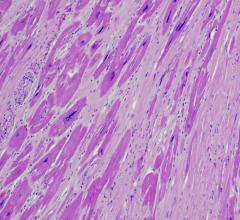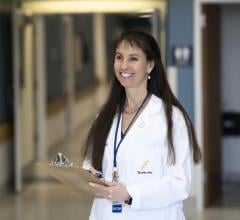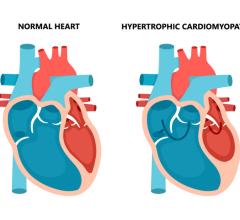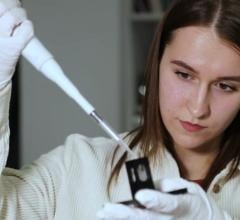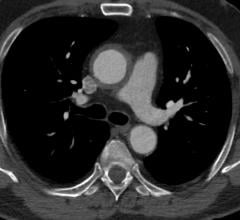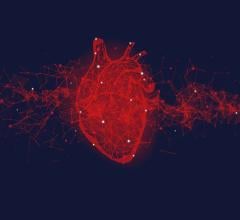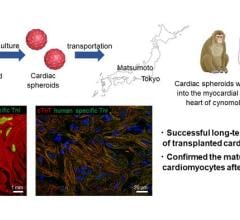May 18, 2012 - New research from the University at Buffalo suggests that cardiologists may have a new way to identify patients who are at the highest risk of sudden cardiac arrest, and the most likely to benefit from receiving an implantable cardiac defibrillator (ICD).
ICDs are used to prevent sudden cardiac arrest in patients with advanced heart disease, but many patients’ devices are never triggered. New research suggests that imaging the loss of nerve function in the heart may identify those patients at greatest risk of developing a life-threatening arrhythmia.
That finding was reported May 10 at 11 a.m. ET as a Late-Breaking Clinical Trial at the Heart Rhythm Society’s 33rd Annual Scientific Sessions in Boston.
The UB PAREPET study (Prediction of Arrhythmic Events with Positron Emission Tomography [PET]), is the largest PET imaging study ever done on sudden cardiac arrest.
UB researchers used PET imaging to quantify the patients’ amount of denervated myocardium, where sympathetic nerves in the heart have died or become damaged due to inadequate blood flow. This was accomplished by imaging the heart’s ability to take up a radioactive tracer of norepinephrine, the neurotransmitter released from the heart’s neurons, using the cyclotron-generated radiopharmaceutical 11C-hydroxyephedrine.
“The principal question we posed with this study was whether the amount of denervated myocardium could predict sudden cardiac arrest,” says James A. Fallavollita, M.D., UB professor of medicine and lead author on the study. “We found that when at least 38 percent of the heart was denervated, there was a significant increase in the risk of sudden cardiac arrest.”
“Ultimately, we wanted to develop an approach that could tackle the problem of identifying a larger portion of the patients with coronary artery disease who are at risk of developing sudden cardiac arrest,” explains John M. Canty Jr., M.D., the Albert and Elizabeth Rekate professor of medicine in the UB School of Medicine and Biomedical Sciences and UB's chief of cardiovascular medicine, who was principal investigator of the research. “Since many patients who suffer a cardiac arrest do not have severely depressed heart function, PET imaging may be able to identify high risk individuals who, in the future, could be considered candidates for an ICD.”
Currently, the main criteria for determining who gets an ICD is a measurement of heart function called the ejection fraction, which is the percentage of blood pumped by the heart with each beat. Individuals with an ejection fraction of 35 percent or less are considered candidates for ICDs because they have a significant risk of sudden cardiac arrest.
Funded by the National Institutes of Health, PAREPET involved 204 patients from western New York with advanced heart disease.
The current research study is a prime example of translational medicine because it came directly out of the laboratory research the UB researchers had performed in animals with chronic ischemic heart disease. These preclinical studies demonstrated that the risk of developing ventricular fibrillation was related to regional myocardial denervation.
“This is as clear an example of translational medicine as there is, with a project being taken from bench-to-bedside by the same investigative team,” says Canty. “In our preclinical research, we studied factors that lead to sudden cardiac arrest in animals. This led directly to the human study. This important finding may ultimately impact the care of patients with heart disease.”
This summer, Canty and Fallavollita will be among the core of UB translational medicine researchers who will move their laboratories into the university’s Clinical and Translational Research Center, in the top four floors of the new $291 million joint UB-Kaleida Health building now under construction on the Buffalo Niagara Medical Campus.
Other UB investigators participating in the PAREPET study included Michael E. Cain, M.D., vice president for health sciences and dean of the medical school, and Anne B. Curtis, Charles and Mary Bauer Professor and chair of the Department of Medicine, both international experts in cardiac electrophysiology; Sunil Baldwa, M.D., clinical assistant professor of medicine; Andrew J. Luisi, M.D., clinical assistant professor of medicine; Alan Hutson, chair and professor of the Department of Biostatistics in the School of Public Health and Health Professions; Terry Mashtare, Ph.D., research assistant professor in the same department; Suzanne Michalek, RN, clinical nurse specialist; and Brendan Heavy, MPH, research scientist in the Department of Medicine.
For more information: www.buffalo.edu/news/6903.

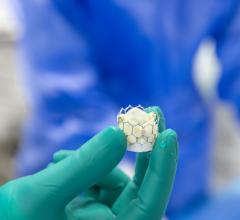
 May 15, 2024
May 15, 2024 
